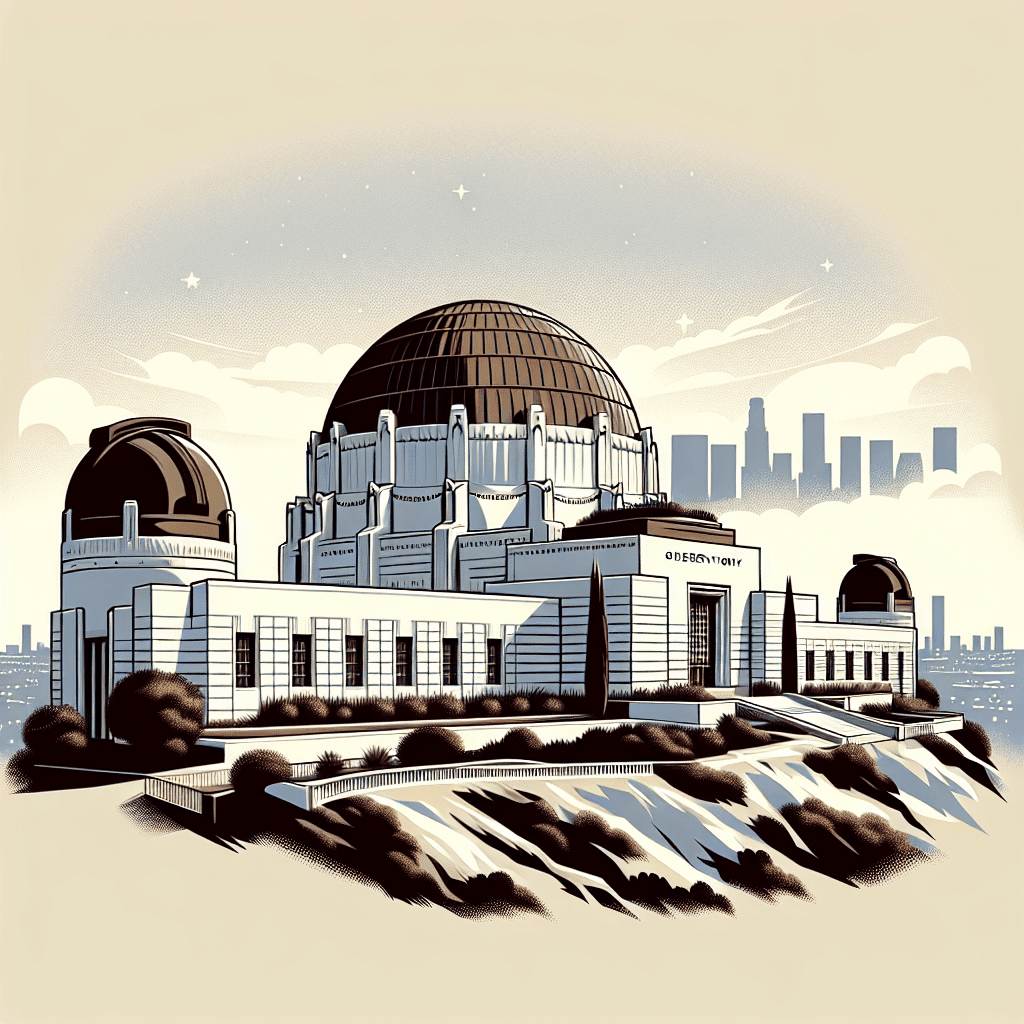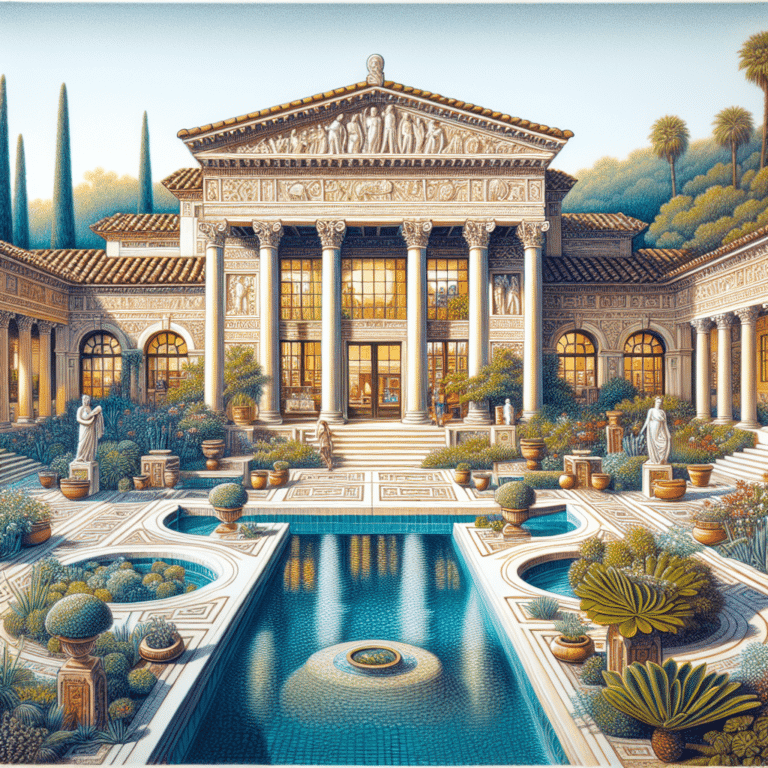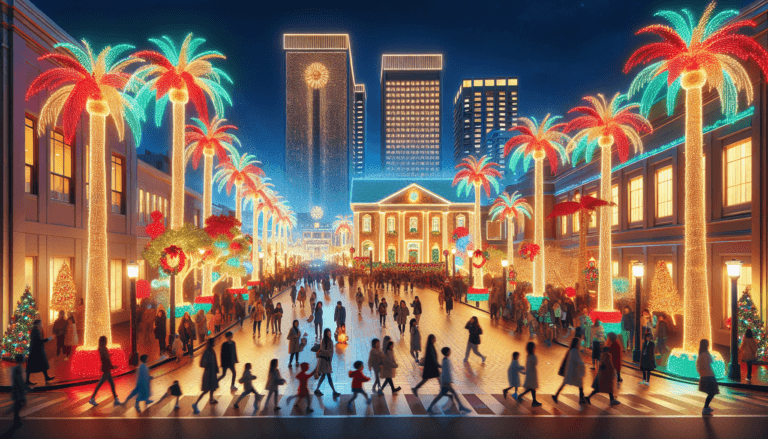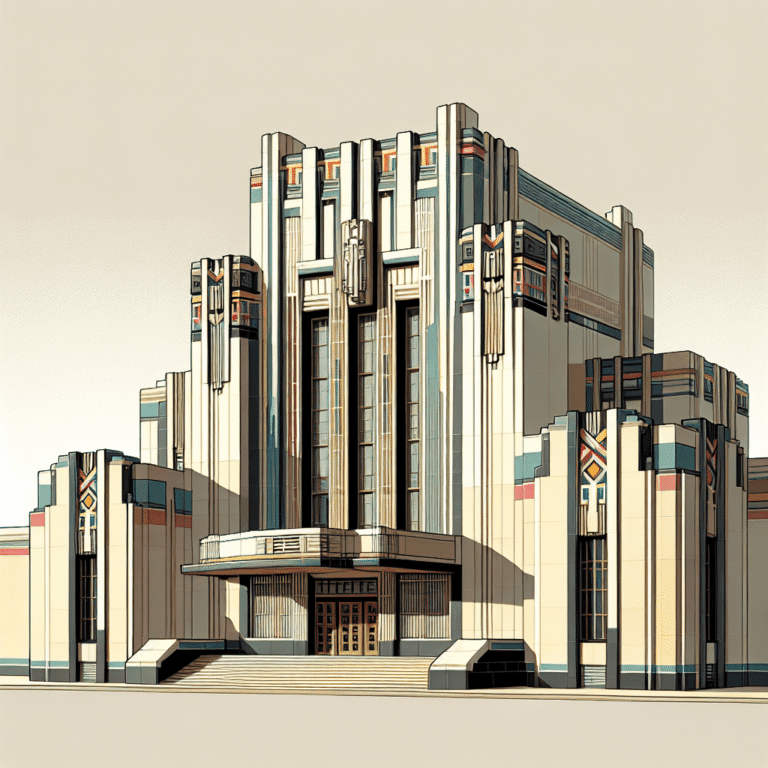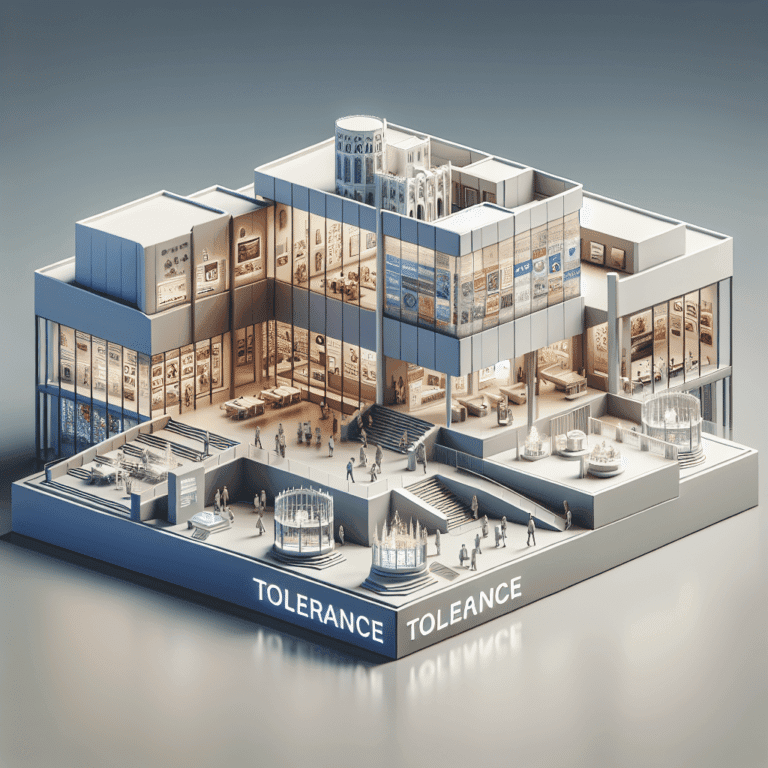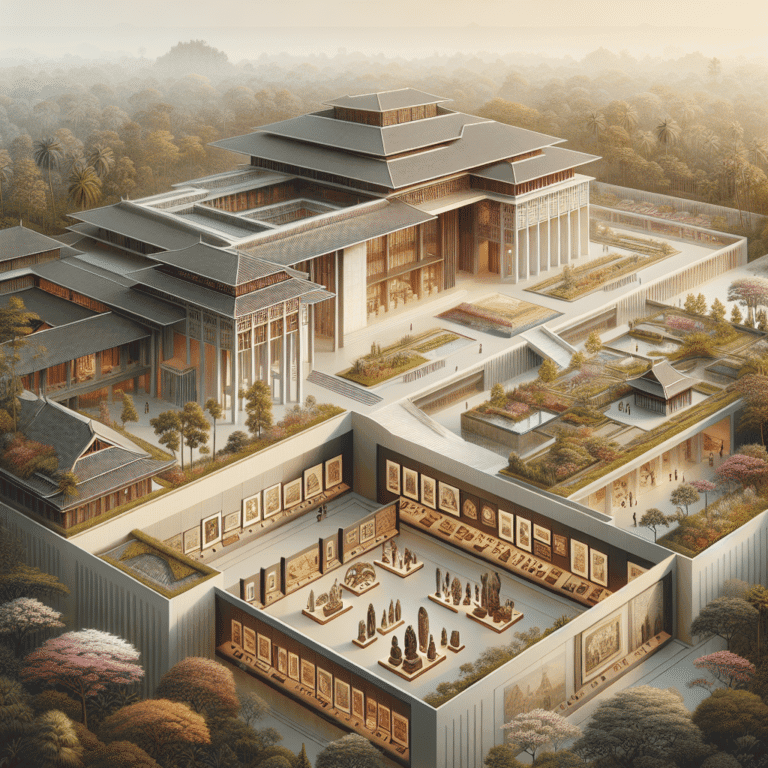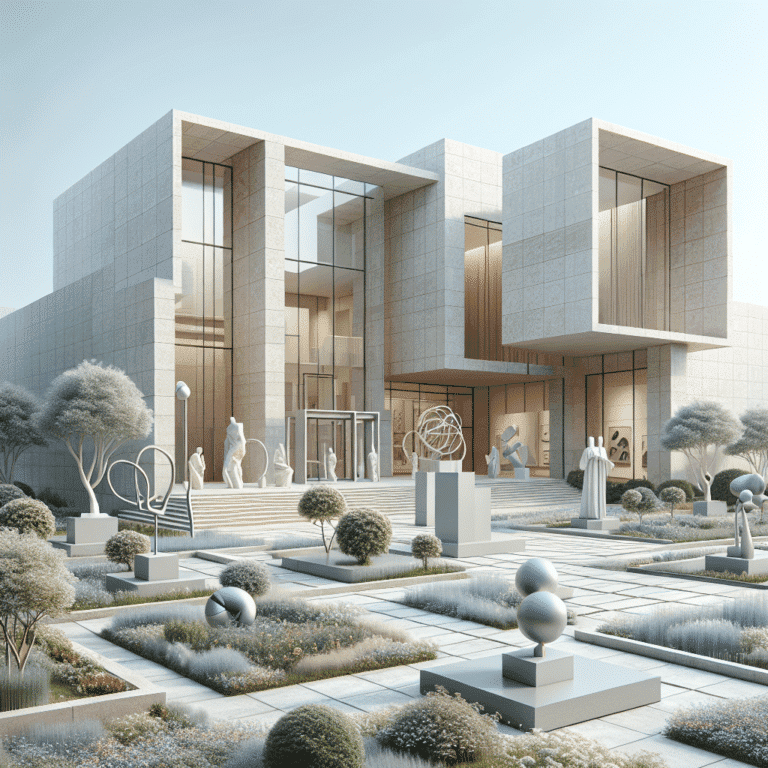Embark on an Epic Journey: Exploring Griffith Observatory with Me
Discovering Griffith Observatory
History and Vision
I was thrilled to learn about the fascinating history of Griffith Observatory, a true gem in Los Angeles. The observatory was established thanks to the visionary Griffith J. Griffith, who had grand plans for a “public observatory” in the early 20th century. Completed in 1935, it became one of the first institutions in the U.S. dedicated to public science, operating under the stipulation that it would be free for everyone to visit. This unique hybrid function as a public observatory, planetarium, and exhibition space makes it a must-visit destination for anyone interested in astronomy.
Griffith’s vision was to make the wonders of the universe accessible to all, and that vision has endured over the decades. The observatory houses the third planetarium in the country, showcasing the beauty and complexity of our cosmos. As I walked through the observatory, I couldn’t help but feel connected to the legacy of Griffith and his drive to inspire future generations.
Renovation and Expansion
After nearly 67 years of operation, the observatory closed its doors in 2002 for extensive renovation and expansion. This marked the first major capital improvement in its history, with a comprehensive project costing around $93 million. The renovations aimed to enhance the observatory’s mission of public astronomy while updating its facilities for modern visitors.
The renovation included updating the existing building, developing a state-of-the-art planetarium, expanding public spaces, and creating new exhibit programs. When it reopened to the public on November 2, 2006, the Griffith Observatory not only retained its historical charm but also showcased modern advancements in astronomy.
| Feature | Details |
|---|---|
| Completion Year | 1935 |
| Renovation Period | 2002-2006 |
| Renovation Cost | $93 million |
| Unique Features | Public observatory, planetarium, exhibition space |
Visiting Griffith Observatory is not just about the stars; it’s about experiencing the rich history and the ongoing commitment to making science accessible to everyone. If you’re exploring Los Angeles and looking for an enriching experience, this is one of the best Los Angeles museums to visit!
Exploring the Expanded Observatory
Visiting the newly expanded Griffith Observatory is an exciting adventure, and I couldn’t wait to dive into all the amazing features it offers. The expansion includes a variety of exhibits and facilities that enhance the overall experience for visitors like me.
“The Richard and Lois Gunther Depths of Space”
One of the standout attractions is “The Richard and Lois Gunther Depths of Space” exhibit. This gallery beautifully showcases how human perspectives have transformed as we have ventured into space. I was captivated by the displays that detailed the history of space exploration and the advancements in our understanding of the universe. It’s not just an exhibit; it’s an immersive journey that makes you feel as if you are part of the cosmos.
“Leonard Nimoy Event Horizon” Theater
Next up is the incredible “Leonard Nimoy Event Horizon” theater. This 190-seat multimedia auditorium is more than just a place to watch shows. It enhances the observatory’s programming with live transmissions of space events, making it a hub for astronomical training and education. I loved how engaging the presentations were, and they truly brought the wonders of space to life. The theater plays a crucial role in educating visitors and even offers specialized programs for teachers.
Visitor Services and Facilities
The expansion also focused on improving visitor services and facilities, making it a more enjoyable experience overall.
| Facility | Description |
|---|---|
| Cafe at the End of the Universe | Operated by Wolfgang Puck Catering, this cafe offers delicious refreshments with stunning views. |
| Stellar Emporium | A gift shop filled with astronomically-themed items, perfect for souvenirs. |
| Accessibility Features | The observatory now includes four new public entrances, ramps for wheelchair access, and an elevator from the Central Rotunda, ensuring everyone can enjoy the exhibits. |
These enhancements make the Griffith Observatory not just a place to learn but also a comfortable environment for all visitors. Whether grabbing a bite to eat or shopping for unique gifts, I found every aspect of the expanded observatory to be thoughtfully designed.
For anyone searching for fun and educational places in Los Angeles, the Griffith Observatory is a must-visit destination. If you’re curious about other attractions, check out our list of the best Los Angeles museums for more ideas!
The Iconic Zeiss Telescopes
Zeiss Telescope Viewing
One of the main attractions at Griffith Observatory is the iconic 12-inch Zeiss refracting telescope, which has been captivating visitors since the observatory opened in 1935. This telescope is not only designed for public observation but also supports research work at the observatory. I love the experience of viewing celestial objects through this magnificent instrument, especially during special events when the Moon, planets, and other bright objects come into focus.
The Zeiss telescope is mounted on a tilted axis aligned with Earth’s rotation, and thanks to its motorized movement, it allows for smooth adjustments as the Earth turns. Weighing in at an impressive 9,000 pounds, the telescope is expertly counterbalanced, making it surprisingly easy for the Telescope Demonstrator to operate. Over 7 million people have had the chance to gaze through this telescope, making it the most popular telescope for public viewing in the world (Wikipedia).
| Telescope Type | Diameter | Weight | Year Introduced |
|---|---|---|---|
| 12-inch Zeiss Refractor | 30.5 cm | 9,000 lbs | 1935 |
| 9½-inch Refractor | 24.1 cm | Not specified | 1955 |
For an unforgettable experience, I highly recommend planning your visit during special celestial events, as the observatory often opens the telescope for night sky viewing.
Research and Public Observation
The Zeiss telescopes serve a dual purpose: they are vital for scientific research and provide awe-inspiring views for the public. The original 12-inch telescope has been particularly popular during events like Halley’s Comet, where more viewers have had the opportunity to see this spectacular object than through any other telescope globally.
The observatory’s commitment to public education is evident through its extensive array of exhibits and programs. The knowledgeable staff is always on hand to share insights and guide visitors through their astronomical adventures. Whether it’s the allure of the stars or the intricate details of our planetary neighbors, the Griffith Observatory provides an enriching experience that I believe is unmatched in Los Angeles.
For those interested in expanding their knowledge further, there are numerous exhibits and activities available at the observatory. If you’re planning your visit, you might also want to explore other amazing places such as the Getty Center or California Science Center to round out your cultural experience in Los Angeles.
Astronomy at Griffith Observatory
Visiting Griffith Observatory is like stepping into a world where the wonders of the universe come to life. Among the many fascinating elements of this iconic landmark are the Astronomers Monument and the Sundial, both of which offer a unique glimpse into the history of astronomy.
Astronomers Monument
One of the first things I noticed at Griffith Observatory was the impressive Astronomers Monument. This large outdoor concrete sculpture was completed on November 25, 1934, and stands roughly 37.5 feet high, making it an unmistakable centerpiece of the observatory. The monument celebrates six of the greatest astronomers of all time: Hipparchus, Nicolaus Copernicus, Galileo Galilei, Johannes Kepler, Isaac Newton, and William Herschel. Initially, Albert Einstein was considered for inclusion, but since he was still alive at the time, he was ultimately excluded (Griffith Observatory).
Atop the monument is an armillary sphere, which weighs an astonishing 900 pounds and is made of bronze. This sphere was installed in 1991, replacing the original one that was made of cement and copper. The armillary sphere serves as an astronomical instrument representing celestial latitude, longitude, and the ecliptic, all critical for understanding the movements of celestial bodies (Griffith Observatory).
| Astronomer | Contribution |
|---|---|
| Hipparchus | Developed the first known star catalog |
| Nicolaus Copernicus | Proposed the heliocentric model |
| Galileo Galilei | Improved the telescope; discovered moons of Jupiter |
| Johannes Kepler | Formulated laws of planetary motion |
| Isaac Newton | Developed the laws of motion and universal gravitation |
| William Herschel | Discovered Uranus; developed the reflecting telescope |
Sundial and Celestial Instruments
Right next to the Astronomers Monument is the sundial, a stunning piece created by the observatory staff in 1957. This equatorial sundial, made of high-nickel bronze, has an outside diameter of 34 inches. It allows visitors to track the movement of the shadow to tell time using the Sun, emphasizing the importance of Earth’s rotation as a timekeeper (Griffith Observatory).
The sundial is not just a functional instrument; it also highlights the connection between time and astronomy. By observing how the shadow moves, I was reminded of the intricate dance of celestial bodies above us.
In addition to the sundial, Griffith Observatory features various celestial instruments that showcase the art and science of astronomy. These tools have played a significant role in humanity’s understanding of the cosmos, and exploring them was truly a highlight of my visit.
If you’re looking for a fun and educational experience in Los Angeles, Griffith Observatory is a must-visit spot. Don’t forget to check out other fascinating places like the California Science Center or Los Angeles County Museum of Art (LACMA) for a full day of exploration!
Architectural Marvels
The Griffith Observatory stands as a stunning example of architectural brilliance, showcasing unique design elements that captivate every visitor. I always find myself in awe of its features, particularly the Art Deco design and the Griffith Observatory Meridian Line.
Art Deco Design
The Art Deco design of Griffith Observatory is simply breathtaking. Designed by architects John C. Austin and Frederick Ashley, the building is a blend of grand and monument styles that draws inspiration from various influences, giving it the appearance of a Roman temple, Moorish mosque, or even a mausoleum (Designing Buildings).
Construction began in 1933 as part of a WPA project during the Great Depression. Using affordable materials and labor, the observatory faced challenges, particularly after the Long Beach earthquake in the same year, which prompted a shift in the exterior materials from terra cotta to stronger concrete. The observatory was completed in 1935 at a cost of only $400,000, making it a remarkable achievement for its time.
The exterior maintains its Art Deco flair even after a major renovation completed in 2006. This restoration preserved the iconic look while updating the facility to enhance the visitor experience. The observatory’s unique architecture not only serves as a scientific institution but also as a cultural landmark in Los Angeles.
Griffith Observatory Meridian Line
Another fascinating feature of the Griffith Observatory is the Griffith Observatory Meridian Line. This line marks the local solar noon and allows visitors to understand the relationship between time and astronomy. It runs along the north-south axis of the observatory and is an essential part of the observatory’s educational experience.
The Meridian Line is not just a line; it represents the intersection of history, science, and art. Visitors can engage with it while learning about the Earth’s rotation and how it impacts our understanding of time. This experience enhances the educational aspect of the observatory, making it a fun and informative outing for individuals and families alike.
Whether I’m admiring the stunning Art Deco design or exploring the scientific significance of the Meridian Line, the architectural marvels of Griffith Observatory continue to inspire and educate visitors. For those looking for more cultural experiences in Los Angeles, consider checking out the best los angeles museums for a variety of unique attractions.
Fun Facts and Trivia
Live Planetarium Shows
One of the most exciting aspects of visiting the Griffith Observatory is its live planetarium shows. In fact, it’s one of the only major facilities in the world that produces exclusively live demonstrations! Since its opening in 1935, over 100,000 live planetarium shows have captivated audiences (Griffith Observatory).
Former Observatory Director Clarence Cleminshaw was a true star, presenting more than 8,000 shows during his incredible 33 years on staff! The Samuel Oschin Planetarium continues this legacy, offering a variety of programs related to space travel and special effects, making it a unique experience for everyone (Griffith Observatory).
| Year | Number of Shows Presented |
|---|---|
| 1935 | 0 (Year of Opening) |
| 1964 | 29,000 (End of Zeiss Mark II Usage) |
| 2023 | 100,000+ (Total Live Shows) |
Film and TV Appearances
Griffith Observatory isn’t just a star in the sky; it’s also a star on screen! This iconic location has made numerous appearances in popular films and television shows. From movies like “Rebel Without a Cause” to “La La Land,” the Observatory has served as a stunning backdrop for many memorable scenes.
Its architectural beauty and breathtaking view of Los Angeles make it a favorite among filmmakers. Whether you’re a movie buff or just love a good story, spotting the Griffith Observatory in your favorite film adds an extra layer of excitement to your visit.
For more fun and engaging experiences in Los Angeles, check out other incredible museums like the Getty Center and the California Science Center. Each offers unique attractions that promise to enrich your understanding of art, science, and history!
Griffith Observatory’s Legacy
Public Access and Education
Visiting the Griffith Observatory is like stepping into a world where astronomy meets accessibility. Since its opening in 1935, the observatory has remained free to the public, fulfilling Griffith J. Griffith’s vision of making science accessible for everyone. This commitment has allowed millions to explore the wonders of the universe without any barriers.
Over 7 million people have gazed through the 12-inch Zeiss refractor telescope since the observatory’s inception, showcasing its importance in providing public access to astronomy (Wikipedia). The Samuel Oschin Planetarium is also a cornerstone of educational outreach, having pioneered live programs that engage audiences in the magic of space. This innovative approach to education encourages visitors of all ages to connect with the cosmos in a meaningful way (Griffith Observatory).
| Year Opened | Admission Fee | Visitors (Cumulative) |
|---|---|---|
| 1935 | Free | Over 7 million (through telescope) |
Ongoing Impact and Engagement
The impact of Griffith Observatory extends far beyond its physical boundaries. The observatory engages with a diverse audience through in-person visits, online platforms, and various media appearances. This multifaceted approach enhances public education and inspires curiosity about astronomy and space.
The Zeiss Mark IV projector, used for over 37 years, contributed significantly to public engagement by showcasing live programs and educational content. Today, the Samuel Oschin Planetarium continues this legacy, offering innovative programming that captivates audiences and fosters a deeper understanding of the universe (Griffith Observatory).
The Griffith Observatory’s legacy is not only about the stars we view but also about the connections we make and the inspiration it provides. For those interested in exploring more cultural and educational experiences in Los Angeles, consider visiting other remarkable institutions like the Getty Center or the California Science Center.

